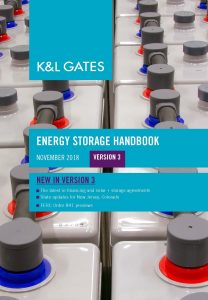Screen Grabs: FERC’s NOPR Removes Screens in Organized Markets Where Market Mitigation Rules
By William Keyser, Benjamin Tejblum, and Abraham F. Johns
On December 20, 2018, the Federal Energy Regulatory Commission (FERC) announced a Notice of Proposed Rule Making (NOPR) designed to simplify the horizontal market power analysis necessary for electric power sellers to secure market-based rate authority in some wholesale power markets. Specifically, the NOPR eliminates the need to perform two indicative screens (the pivotal supplier screen and the wholesale market share screen) in capacity markets and wholesale power markets already subject to Commission-approved monitoring and mitigation rules. Notably, the Southwest Power Pool and California Independent System Operator wholesale markets are not subject to these monitoring and mitigation rules, so parties seeking market-based rate authority to sell capacity in those markets must still perform the two indicative screens. This simplification will relieve the added procedural burden of administering the indicative screens for parties seeking market-based rate authority in the other FERC-regulated markets.
The NOPR also proposes to remove the presumption that market monitoring or mitigation measures will adequately address indicative screen failures in organized wholesale power markets where the grid operator does not administer a capacity market. Rather, the NOPR proposes that in the event of an indicative screen failure in those markets, applicants submit a delivered-price test or other evidence demonstrating a lack of horizontal market power or that the applicant propose other mitigation for capacity sales in those markets.
K&L Gates attorneys will continue to monitor these developments and assist our clients navigating compliance with FERC rules and regulations.


